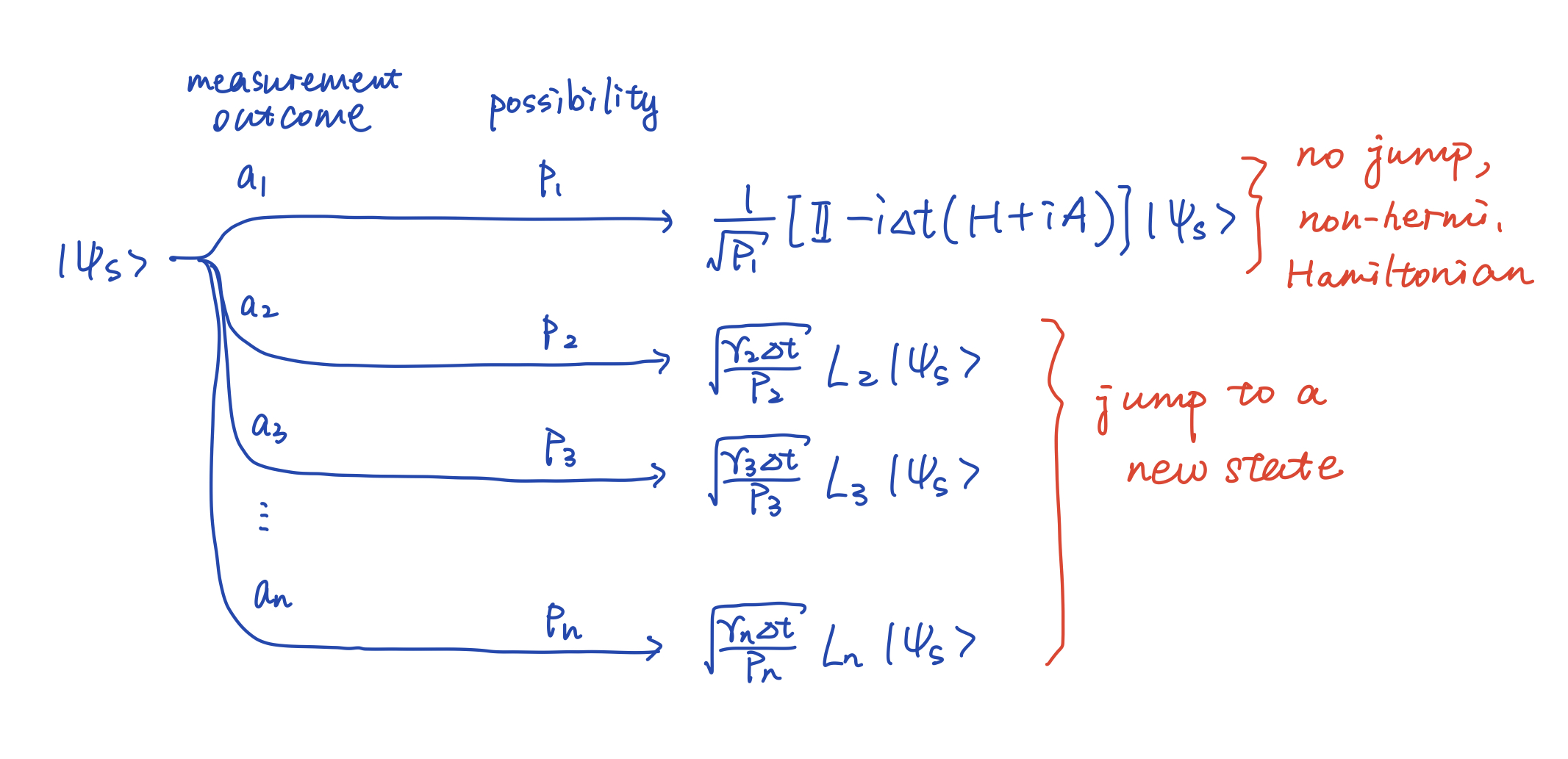A note on open system quantum mechanics.
1. Densitry Matrix
A mixed state is an ensemble of pure states.
The density matrix is defined as:
not necessarily orthogonal. , the possibility. - There are infinite ways to decompose the mixed state
into a ensemble of pure states.
For pure states,
The purity of the state is defined as
Some properties of mixed state density matrix:
- Trace is 1:
. - Hermiticity:
. - Positivity: For arbitary
, .
1.1 Partial Trace
Reduced density matrix is the density matrix for the subsytem. For a bipartite system
Here
1.2 The Schmidt Decomposition
Theorem: For any vector
in Hilbert space $\mathcal H1 \otimes \mathcal H_2 {u_i^1},{u_i^2} 1 \leq i \leq m\leq min{ D_1,D_2} v v=\sum{i=1}^m a_i u_i^1\otimes u_i^2 a_i$ non-negative.
The number
2. Lindblad Master Equation
Assuming the system is Markovian, we can expect the density matrix evolution to be linear:
To make the Markovian assumption appropriate, we only look at a time scale $Ts
For closed system, linear evolution gives the Liouville-von Neumann eqution:
For open system, the evolution can be written as an operation
And the operation
with
The closed system evolution
So
And using
Here
This is the famous Lindblad master equation.
- With only the first term,
describes the closed system, where the evolution is unitary. - With only the first two terms it describes a non-Hermitian Halmitonian, which causes the decay of the amplitude and is not physical.
- With all three terms it describes the evolution of an open system. The third term corresponds to the so-called “jump operators”.
- For a paticular system and bath coupling system, the choice of the jump operators is not unique.
3. Unraveling the Master Equation: Quantum Trajectory
3.1 Piecewise Diterministic Processes
Piecewise Diterministic Processes (PDP): 分段确定过程。 Diterministic procesess + jump processes.
A stochastic process produces sample paths
Given an initial $X(t0) = x_0
For sufficiently short
So the jump term takes the form
Then the PDP equation
3.2 Quantum trajectories: PDP in Hilbert space
According to the master equation, the time evolution of a density matrix is:
Here the dumping term
With $M1 = \mathbb I -iH\Delta t - \frac{1}{2}\sum{\alpha >1} \gamma\alpha L\alpha^\dagger L\alpha \Delta t
This operation is actually achieved by tracing out the enviornment (applying measurements to the enviornment), and each 
Here $p1 = 1-\Delta t \sum{\alpha >1} \gamma\alpha \langle \psi_s|L\alpha^\dagger L\alpha | \psi_s \rangle
Consider this as a PDP, we have:
- between the jumps the state evolves by a non-Hermitian: note that we can write $p1 = 1-x
x \sim dt \frac{1}{\sqrt{p_1}} = \frac{1}{\sqrt{1-x}} \approx 1+\frac{1}{2}x = 1+\frac{1}{2}dt \sum{\alpha >1} \gamma\alpha |L\alpha \psi|^2$. - jumps occur with probabilities $p{\alpha>1}
$\psi(t+dt) = \sum{\alpha>1} (\frac{L\alpha \psi}{|L\alpha \psi|}-\psi) dN_\alpha\tag{3.7}$$
In total, we get:
3.3 Connection between quantum trajectories and the density matrix
The projection of the enviornment measurement divide the Hilbert space into subspaces. The probability for a subspace
For any functional
- The expectation value of an observable
: . - The density matrix:
. .